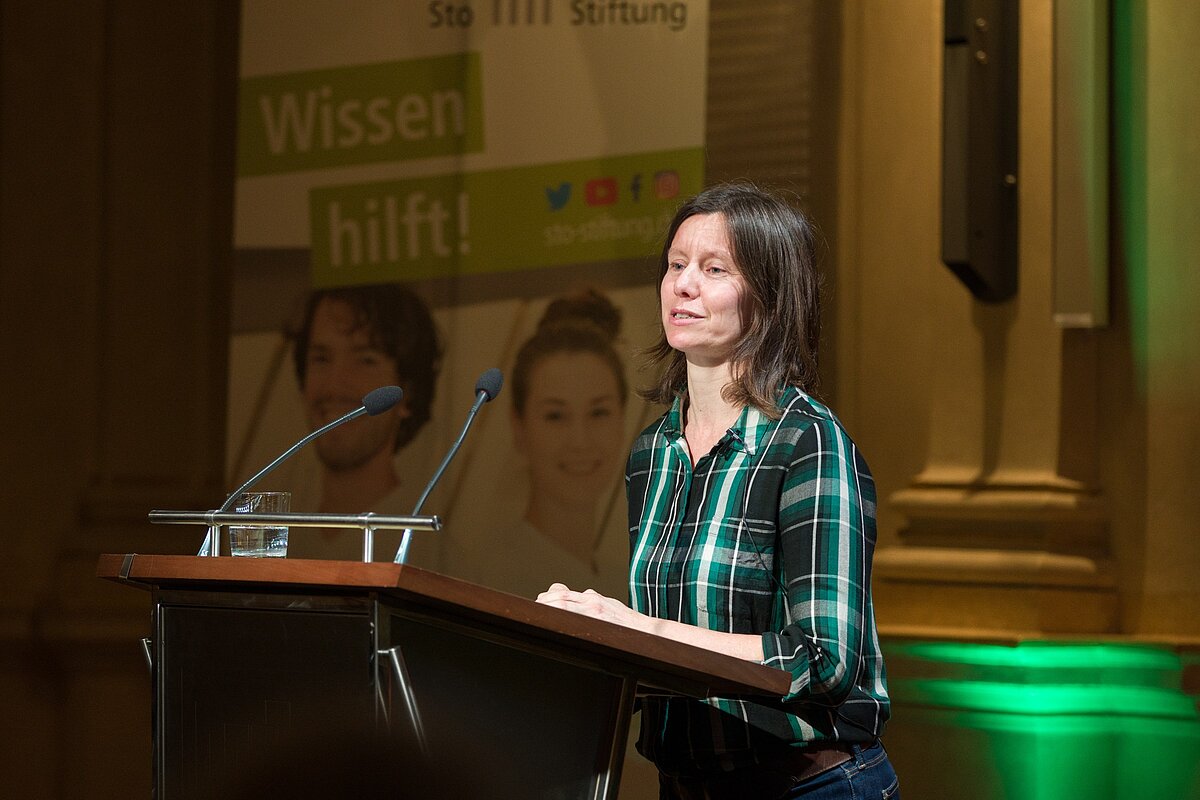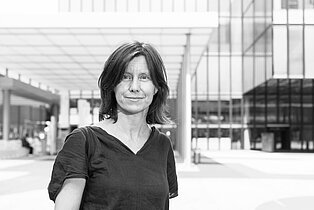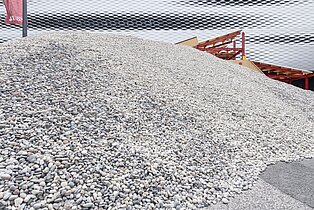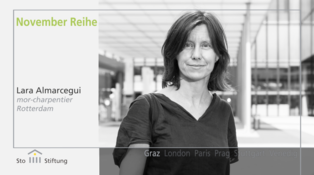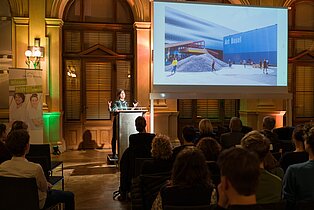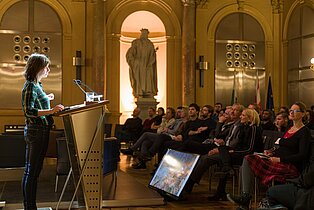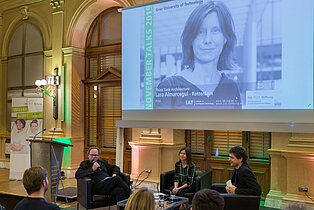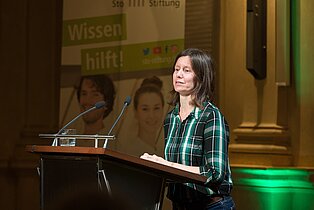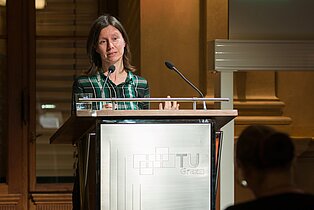Review | Lara Almarcegui in Graz
Deconstruction of construction
More room for non-architecture: with this provocation, Lara Almarcegui concluded the November Talks 2019 in Graz. This artist, with a Rotterdam address, focuses on what comes before and after construction: raw materials, neglected land, demolition, construction waste. Unbuilt does not mean empty. And empty does not mean meaningless.
When you walk through a city, no matter which one, says Lara Almarcegui, to a civilized person everything is presented in a completely constructed, completely designed - and completely controlled way. "Is there an escape from that?", she asked on November 25, 2019, in the hall of the Graz University of Technology. Born in Zaragoza in 1972 and based in Rotterdam, the artist is concerned with those urban spaces where something is either going to be built or certain buildings soon are going to be removed, as well as neglected lands, houses set to be demolished, construction waste. She is concerned with the non-house that always comes before and after construction. "This is my next project," she said several times that night, picking up a laser pointer. And in those moments, when you are expecting another impressive building on the screen of the November Talks, each time there was an empty peace of meadow and land, one river, two trees - or a pile of construction waste. The non-architecture got its room in a provocative way.
As a student, Lara Almarcegui had already caused an uproar among artists when she started to renovate a market hall in San Sebastián, Spain, set to be demolished. "What for?", the passersby asked. Lara Almarcegui knows what is it for: “Architects build wonderful exhibition spaces, and we, the artists, can fill them with things? Well, no”, she said, “I want to comprehend the space myself.” She has designed “guides through the neglected lands” as a form of brochures for the exhibitions. Such "places without decision" can be found in London as well as in Rome, on the banks of the Tiber, in Germany, France, Netherlands. In this way, she encourages discussion: about the space, about the places in a city that nobody usually talks about. Often, we are speechless when it comes to soil beneath our built living spaces. She therefore grabbed a shovel on a neglected land in Amsterdam and started to dig. "What is the nature of this place? What's underneath? ”However, the excavation work was abruptly interrupted when groundwater flooded the ground. Large-scale excavations happen in tunnel construction - no wonder the artist was attracted to such an endeavor. In Madrid, she was offering guided tours through a tunnel construction site as an art project. "They worked there from Monday to Saturday. When we went to the tunnel on Sundays and saw the machines standing there, it was clear: this wall would not be there tomorrow.” Construction also always affects the temporary.
"How is soil used? Who owns it?” – these are the questions Lara Almarcegui answers, among other, by using a shovel and searching for treasure. Surprisingly, the hidden treasures of the soil do not belong to the landowner, as she found out in her research, but depend on local legislation, the state, companies or even persons that grant mining rights. Shell, for example, owns certain parts of the soil in the Netherlands - not the plots, but what's underneath. And in Tveitvangen, not far from Oslo, Norway, Lara Almarcegui bought mining rights for one square meter of one-kilometer lateral length. In the same year, she attacked the Graz area: in Thal and Buchkogel, she secured a circle around a GPS coordinate with a radius of almost 400 meters, for €16.40 each. "My rights go all the way to the center of the Earth," she noted, fascinated. Such a concession is valid for four years - and she even has an obligation to investigate whether there are iron ores in the soil: "Now, I am urgently looking for a geologist!"
Building materials are also of little interest to urban men because, in the end, they are not visible. It can be really enlightening to see the unprocessed ingredients for a building neatly stacked next to the corresponding building. Take: 1.2 million tons of brick, 500,000 tons of concrete, a pinch of glass, plus one load of mortar. Lara Almarcegui takes different building shapes of different dimensions and juxtaposes them with the ingredients: a water tower in the French town of Phalsburg, the Lange house in Krefeld, downtown São Paulo - billions of tons of material lie there - or in Morocco: quadrillions. In the case of the water tower, the ingredients are indeed real building materials from sponsors, the rest are only dimensionally limited lists: recipes for building.
The Spanish Pavilion for the 55th Venice Biennale was also designed by Lara Almarcegui. As you might expect, there was a pile of construction waste. It filled the entire room like a mountain made of light gray cement grains. According to a detailed calculation, it consisted of the exact amount of construction material used for the construction of the Pavilion in 1922. The cement was collected from demolished buildings, thus closing again the cycle of construction, demolition and design.
<figcaption>Photo: Creative Time und Art Basel</figcaption>
Born in 1972 in Zaragoza, Spain, in her projects Lara Almarcegui focuses on urban transformation processes and changes. Since the 1990s, she has been focusing her attention on urban conditions that are generally not at the center of perception: neglected lands, building materials, the invisible. She has already completed a number of international projects, from the renovation of a market in San Sebastián (Spain) set to be demolished, to intensive engagement in neglected lands in Rotterdam, Bilbao, São Paulo, Lisbon and Amsterdam. She gathers and documents historical, geographical, environmental and sociological facts about neglected lands in urban areas that will soon change.
Interview-Video
Lara Almarcegui spoke about her lecture at the November Talks in Graz.


